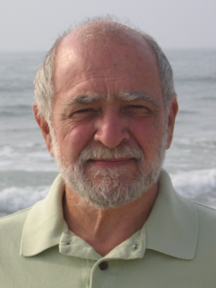Nicholas F. Maxemchuk
- Associated organizations
- Bell Labs
- Fields of study
- Computing
Biography
A professor at Columbia University in New York and a former department head at Bell Labs Research in Murray Hill, New Jersey, Professor Nicholas F. Maxemchuk is a networking pioneer. His visionary contributions have opened new avenues and led to groundbreaking new systems – sometimes years before their time.
In 1974, Professor Maxemchuk invented Dispersity Routing, a procedure that is still used in wireless ad hoc networks. In 1983, he invented the Reliable Multicast Protocol (RMP), the first reliable multicast protocol for broadcast networks like Ethernet, and has been used extensively on the Internet. That same year, Professor Maxemchuk also developed Homenet, a CATV (community aided television) network that also carried voice and data using a transmission technique enabling Ethernet protocols to be applied over longer distances. All three technologies proved to be more than 20 years ahead of their time. In 1985, he invented the Manhattan Street Network, so named for its design resembling Manhattan streets and avenues. This metropolitan area network required little or no storage, yet could attain throughputs exceeding 90 percent. The technology was incorporated into high-speed routers and ATM switches, and is being used in experimental optical switches.
Professor Maxemchuk invented the Movable Slot TDM, a protocol used to transmit telephone-quality voice on Ethernets without the collisions then routinely occurring in conventional networks. He introduced probabilistic protocol verification, which showed that a protocol performs its intended operation most of the time, and ultimately was the basis for testing telephone protocols.
In 1992, this perceptive researcher foresaw the advent not only of electronic commerce and publishing, but also the importance of security and privacy protection. By separating personal information and using cryptographic techniques, he created an anonymous credit card that made it difficult to associate a person’s purchases and their identity. A year later, he developed a simple, practical watermarking method to protect the copyrights of text documents used in online distribution. This technique, which represents one of his 28 patents, was the first such information hiding method used on the Internet.
An IEEE Fellow, Professor Maxemchuk was the editor-in-chief of the IEEE Journal on Selected Areas in Communication. In 1996, the IEEE Communications Society presented him with the William R. Bennett Prize in the Field of Communications Circuits and Techniques, and has twice presented the Leonard G. Abraham Prize in the Field of Communications Systems to him.
He holds a bachelor’s degree from the City College of New York and a master’s degree from the University of Pennsylvania in Philadelphia, both in electrical engineering, and a doctoral degree in systems engineering, also from the University of Pennsylvania.
